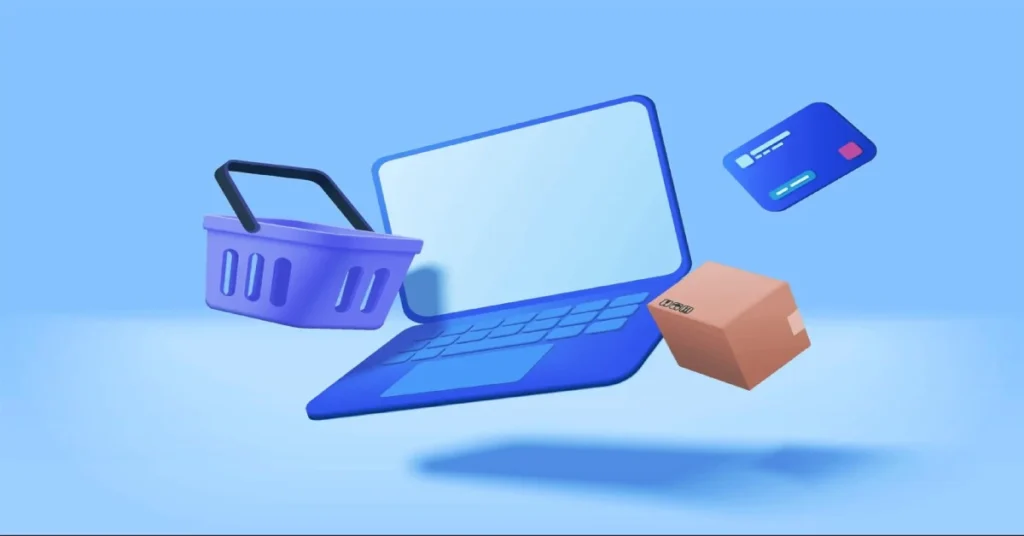The Shopify vs Wix vs Squarespace comparison is interesting. Because these are all providing the best service to their users. Starting an online store in the United States can feel like navigating a maze. You have great products, a vision, and drive.
But which platform will best power your dream? The choices can seem endless. Today, we’ll cut through the noise and explore three giants: Shopify, Wix, and Squarespace. We will discover which platform truly reigns supreme for US business needs.
Key Takeaways: Shopify vs Wix vs Squarespace
- Shopify: Best for businesses prioritizing robust e-commerce features and scalability. It suits those needing extensive customization and a large app ecosystem.
- Wix: Ideal for businesses valuing design freedom and ease of use. It works well for smaller operations, integrating e-commerce into a website.
- Squarespace: A strong choice for visually driven brands seeking a sleek online store with integrated features. It offers a balance of design and e-commerce functionality.
Let’s dive deep into each platform and uncover its strengths. We will help you make an informed decision for your online success.
Choosing Your Best E-commerce Platform

The US e-commerce market continues its rapid growth. In 2024, US e-commerce sales reached an estimated $1.3 trillion (Source: Statista). This presents a massive opportunity for entrepreneurs like you. However, selecting the right foundation for your online store is crucial.
Shopify, Wix, and Squarespace consistently appear as top contenders. Each platform offers unique advantages and caters to different needs. This guide will provide a detailed comparison. It will empower you to choose the perfect fit for your US-based business.
Detailed Platform Comparison: A Head-to-Head Look
Let’s compare Shopify, Wix, and Squarespace across key aspects. This will give you a clear picture of their strengths.
Ease of Use & User Interface: Getting Started
How easy is it to actually use these platforms? Imagine you are setting up shop for the first time. Which platform feels the most welcoming?
- Shopify: The Shopify admin dashboard is well-organized. It focuses heavily on e-commerce workflows. Managing products, orders, and customer data feels intuitive. However, the sheer number of features can be slightly overwhelming initially. Think of it as a powerful control center built specifically for selling.
- Wix: Wix boasts a highly intuitive drag-and-drop editor. You can visually design your website with ease. Placing elements and customizing layouts requires no coding. E-commerce features are integrated smoothly within this visual builder. It feels like designing a presentation where you directly manipulate elements.
- Squarespace: Squarespace offers a clean and structured interface. Its focus lies in aesthetically pleasing templates. Editing happens within a content management system. This ensures design consistency. It might feel slightly less free-form than Wix but offers a more guided design experience.
“For beginners, Wix’s drag-and-drop interface can feel immediately accessible. However, Shopify’s dedicated e-commerce focus becomes invaluable as your business scales.”
E-commerce Features & Functionality: The Core of Selling
What can these platforms do for your online store? This is where the rubber meets the road for any serious seller.
- Shopify: Shopify offers a comprehensive suite of e-commerce tools. You can manage product variants and track inventory efficiently. Order management is robust, and it integrates with numerous payment gateways, including Shopify Payments. Shipping options connect with major US carriers. Its analytics provide deep insights into your sales and customer behavior. The Point of Sale (POS) system further integrates online and offline sales. Shopify is built from the ground up for e-commerce. It handles large product catalogs and high transaction volumes with ease.
- Wix: Wix’s e-commerce features have grown significantly. You can create appealing product galleries and manage orders effectively. It supports multiple payment options and allows setting up shipping rules. Basic inventory management is available. Wix is suitable for smaller businesses or those adding an online store to an existing website. Imagine a local bakery wanting to sell cakes online – Wix can handle that.
- Squarespace: Squarespace provides solid e-commerce functionalities. You can showcase products beautifully and process orders smoothly. It integrates with Stripe and PayPal for payments. Shipping calculations and inventory tracking are included. Squarespace excels with visually focused online stores featuring a curated product selection. Think of an artist selling their prints online – Squarespace provides an elegant platform.
| Feature | Shopify | Wix | Squarespace |
|---|---|---|---|
| Ease of Use | Well-organized, e-commerce-focused | Well-organized, e-commerce-focused | Clean, structured, template-driven |
| E-commerce Tools | Extensive, robust, scalable | Growing, suitable for smaller businesses | Solid, ideal for visually focused stores |
| Product Mgmt. | Advanced (variants, inventory) | Basic | Good |
| Order Mgmt. | Robust | Good | Good |
| Payment Gateways | Many, including Shopify Payments | Multiple options | Stripe, PayPal |
| Shipping | Integrations with major US carriers | Customizable rules | Built-in options |
| Analytics | Comprehensive | Basic | Good |
| POS System | Good | Limited third-party integrations | No built-in POS |
| Scalability | Excellent | Moderate | Moderate |
Design & Customization: Creating Your Brand’s Look

How much control do you have over your store’s appearance? Your website is your digital storefront. It needs to reflect your brand.
- Shopify: Shopify uses a theme-based system. The Shopify Theme Store offers a wide selection of free and paid themes. These cater to various industries. For deeper customization, you can access the Liquid templating language. This requires coding knowledge. The vast app ecosystem also provides tools to enhance design features. Think of it like choosing a base model for a car and then adding custom parts and features.
- Wix: Wix provides immense design freedom with its drag-and-drop editor. You can move and customize elements precisely. Hundreds of templates are available. However, switching templates after significant customization can be difficult. It’s like having a blank canvas where you can build almost anything visually.
- Squarespace: Squarespace is renowned for its professionally designed, modern templates. These templates are responsive and ensure your store looks great on all devices. Customization happens through section-based editing. This ensures a consistent and polished look. It offers less free-form design than Wix but prioritizes aesthetic cohesion.
“Your choice here depends on your comfort level with code and your need for granular design control. Wix offers the most visual freedom, while Shopify provides powerful customization options for those with technical skills or a willingness to hire help.”
Pricing & Value for Money, Specifically for the US Market
What will these platforms cost your US business? Understanding the pricing structure is crucial for budgeting.
- Shopify: Shopify offers several plans: Basic, Shopify, and Advanced. Transaction fees apply if you don’t use Shopify Payments. Each plan includes different features and benefits. Consider your sales volume and required features when choosing. Additional costs can include apps and premium themes. For a growing US business, the scalability justifies the investment for many.
- Wix: Wix offers various website and business/e-commerce plans. The Business Basic, Business Unlimited, and Business VIP plans cater to different needs. Storage limits and transaction fees (depending on the plan) vary. Evaluate the features included in each tier relevant to your US operations.
- Squarespace: Squarespace offers Business and Commerce (Basic and Advanced) plans. Transaction fees are waived on Commerce plans. Features include professional email (through Google Workspace) and marketing tools. It often appeals to creative professionals and smaller US businesses seeking an all-in-one solution.
| Plan Feature | Shopify (USD/month) | Wix (USD/month) | Squarespace (USD/month) |
|---|---|---|---|
| Basic Plan (approx) | $29 (Basic) | $17 (Light) | $16 (Basic) |
| Transaction Fees | Vary (unless Shopify Payments) | Vary by plan | 0% (Commerce plans) |
| Key Features | Core e-commerce tools | Basic e-commerce | Integrated e-commerce |
| Scalability | High | Moderate | Moderate |
Note: Prices are approximate and may vary(These prices are mentioned on their official website at the time of writing). Always check the latest pricing on each platform’s official website.
Apps & Integrations: Extending Functionality
No platform does everything perfectly. How well do these platforms connect with other essential tools for your US business?
- Shopify: Shopify boasts an extensive app store. You can find integrations for marketing (Klaviyo, Mailchimp), sales (Oberlo – though its future is uncertain, alternatives exist like DSers, Printful), customer service, shipping (ShipStation), and more. Many popular apps cater specifically to the US market. This vast ecosystem allows you to customize your store precisely to your needs.
- Wix: Wix has a growing app market. It offers a range of integrations for marketing, analytics, and e-commerce-specific needs. While not as vast as Shopify’s, it covers many essential functions for US businesses.
- Squarespace: Squarespace offers a more curated set of built-in integrations and some third-party extensions. These are often well-integrated within the platform. While the selection is smaller, the focus is on seamless compatibility.
“Think of apps and integrations as adding specialized tools to your workshop. Shopify’s vast app store offers almost any tool you can imagine, while Wix and Squarespace provide a more curated selection of essential instruments.”
SEO (Search Engine Optimization): Getting Found Online

How well do these platforms help customers in the US find your store on search engines like Google?
- Shopify: Shopify provides good built-in SEO features. You can customize meta descriptions, title tags, and URL structures. It automatically generates sitemaps. You can also find SEO apps for more advanced optimization.
- Wix: Wix has significantly improved its SEO capabilities. You can now customize meta tags, URL slugs, and alt text. The Wix SEO Wiz tool guides you through optimization steps.
- Squarespace: Squarespace offers strong foundational SEO features. Its clean code, mobile-responsive design, automatic sitemap generation, and SSL certificates are beneficial. User-friendly SEO settings are integrated into the platform.
“All three platforms provide the essential SEO tools. However, staying updated with the latest SEO best practices for the US market is crucial, regardless of your chosen platform.”
Customer Support: Getting Help When You Need It
What happens when you encounter an issue? Reliable customer support is vital for any business owner.
- Shopify: Shopify offers 24/7 support via live chat, email, and phone. They also have extensive help documentation and active community forums. This round-the-clock support can be invaluable for US businesses operating across different time zones.
- Wix: Wix provides 24/7 support via phone and email. Their help center offers a wealth of articles and tutorials.
- Squarespace: Squarespace offers 24/7 email support and live chat during business hours (Eastern Time). They have a detailed knowledge base and helpful video tutorials.
“Consider the support channels and availability that best suit your needs and time zone within the US.”
Which Platform is Right for You? Considerations for US Businesses
The “best” platform isn’t universal. It depends on your specific needs and goals within the US market. Let’s consider some key factors:
Business Size and Scale: Thinking Big (or Small)
- Shopify: It is Ideal for businesses with high growth potential and large product catalogs. Its infrastructure can handle significant traffic and sales volumes common in successful US e-commerce ventures.
- Wix: This is Suitable for smaller businesses or those integrating e-commerce into a service-based website. It’s a great starting point for many US entrepreneurs testing the waters.
- Squarespace: It is Best for visually focused businesses with a moderate number of products. It caters well to artists, designers, and brands prioritizing aesthetics in the US market.
Technical Skills: Your Comfort Level
- Wix and Squarespace: Excellent choices for users with limited technical expertise. Their intuitive interfaces make website creation and management straightforward.
- Shopify: Offers more advanced customization options for those comfortable with coding or willing to hire developers. This allows for highly tailored online stores that can stand out in the competitive US landscape.
Budget: Managing Your Investment
- Consider the initial costs and ongoing fees. Factor in transaction fees and potential app subscriptions.
- Evaluate the value proposition of each platform’s pricing tiers for your specific US business needs and projected sales.
Specific Business Needs: Tailoring to Your Niche
- Dropshipping: Shopify’s robust app ecosystem makes it a popular choice for dropshipping businesses in the US. Apps like DSers facilitate product sourcing and order fulfillment.
- Creative Portfolio with E-commerce: Squarespace’s design focus makes it ideal for US-based artists and designers selling their work online.
- Local Business with Online Ordering: Wix can be a great option for US-based local businesses wanting to offer online ordering or sales alongside their physical presence.
Long-Term Goals: Planning for the Future
- Consider the scalability of each platform. Can it grow with your US business? Shopify is generally considered the most scalable option.
Conclusion: Choosing Your E-commerce Partner
Choosing the right e-commerce platform is a pivotal decision for your US business. Shopify, Wix, and Squarespace each offer compelling features and cater to different needs.
- Choose Shopify if: You prioritize robust e-commerce features, scalability, and a vast app ecosystem to handle complex needs and future growth in the US market.
- Choose Wix if: Design flexibility, ease of use, and integrating e-commerce into an existing website are your primary concerns for your US-based business.
- Choose Squarespace if: You value visually stunning design and a streamlined, integrated e-commerce experience for showcasing your brand and products to a US audience.
Ultimately, the best platform aligns with your unique business goals, technical skills, and budget. Explore free trials (if available) and conduct further research. Empower yourself to make an informed decision. Your ideal online store awaits!





